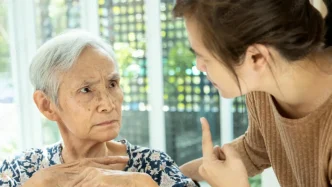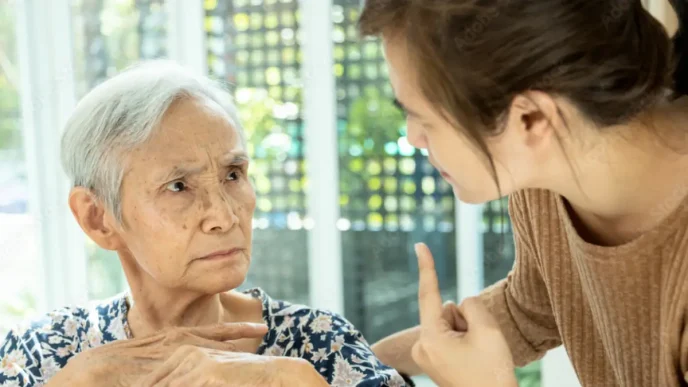In Malaysia, cervical cancer remains a silent threat to thousands of women, often undetected until it’s too late. Despite being the second most common cancer among women aged 15 to 44, misconceptions about personal risk and systemic barriers to healthcare access continue to hinder prevention efforts. With over 10,500 women testing positive for human papillomavirus (HPV)—the leading cause of cervical cancer—over the past five years, health experts and advocates are calling for urgent action to bridge the gap in awareness and screening.
Misconceptions Fuel a Hidden Crisis
One of the biggest obstacles to combating cervical cancer is the widespread failure to recognize personal risk. Many Malaysian women believe they are safe because they feel healthy, a dangerous assumption that delays critical interventions like vaccination and screening. Prof Dr Murallitharan Munisamy, managing director of the National Cancer Society Malaysia (NCSM), highlighted this issue, stating, “The gap lies in the perception that I’m healthy, so I don’t see the need for vaccination or screening” (The Star, July 23, 2025). He also pointed to ignorance about HPV transmission, with many assuming it is solely spread through sexual activity and thus believing monogamy offers complete protection.
This misconception is compounded by societal priorities. Dr Murallitharan noted that while many women readily spend on beauty treatments or spa visits, they often hesitate to invest in health screenings or vaccinations. This reluctance can have devastating consequences, as early detection through screenings like Pap smears or HPV tests can significantly increase survival rates. HPV, a virus that any sexually active person can contract, often shows no symptoms, making regular testing essential.
Health as a Secondary Priority
The lack of prioritization of women’s health is a recurring theme among experts. Datuk Dr Raj Abdul Karim, advisor to the Malaysian Council for Child Welfare, emphasized that many women fail to take silent conditions seriously. “Many women don’t realize that silent blood pressure or diabetes affects your health, and even cancer can be invisible at times” she said (The Star, July 23, 2025). Dr Raj advocates for stronger awareness campaigns to drive home the message that feeling well does not equate to being healthy. She also stressed the importance of the HPV vaccine, which can prevent high-risk strains linked to cervical cancer, and recommended regular Pap smears for women aged 20 to 50, particularly those who are sexually active.
Dr Raj also pointed to innovative solutions like HPV DNA self-sampling, which could help overcome cultural taboos and expand access to screening, especially for rural and vulnerable groups. Such approaches could make testing less invasive and more acceptable, addressing both logistical and social barriers.
Systemic Inequalities and the Need for Advocacy
Beyond individual attitudes, systemic issues play a significant role in limiting access to cervical cancer prevention. Nazreen Nizam, executive director of the Women’s Aid Organisation, argued that the conversation must shift from blaming women to addressing structural inequalities. Despite the introduction of the HPV vaccine in Malaysia in 2019, inconsistent public education has left many unaware of its importance or how to access it. “The government must invest in sustained, multilingual, and culturally relevant public awareness campaigns, and ensure that screening services and vaccines are free or subsidized for all women, regardless of their citizenship or location” she urged (The Star, July 23, 2025).
Nazreen also proposed integrating age-based automatic subsidies for screenings into public healthcare systems and general practitioner clinics, making them part of routine care. However, she emphasized that access alone isn’t enough. Healthcare environments must be safe, non-judgmental, and respectful of women’s autonomy to encourage uptake. This holistic approach could address not just physical barriers but also the emotional and cultural hesitations that prevent women from seeking care.
Innovative Outreach to Close the Gap
Recognizing these challenges, organizations like NCSM are adapting their strategies to meet women where they are. Following the success of the ‘Leaving No One Behind’ HPV vaccination program last year, NCSM is now planning to partner with general practitioners to offer subsidies of up to 70% for screenings. “We are changing our approach. Instead of waiting for patients to come to us, we’ll go to them” Dr Murallitharan explained (The Star, July 23, 2025). This proactive outreach aims to make screenings more accessible and convenient, particularly for women who might not otherwise prioritize their health.
This shift reflects a broader understanding that passive healthcare models are insufficient in addressing deeply ingrained cultural and personal barriers. By bringing services directly to communities, NCSM hopes to normalize screenings and vaccinations as essential components of women’s health, rather than optional extras.
The Bigger Picture: A Preventable Tragedy
Cervical cancer’s preventability makes the current gaps in awareness and access all the more tragic. With the right interventions—vaccination against high-risk HPV strains and regular screenings—the disease could be largely eradicated. Yet, as Health Minister Datuk Seri Dr Dzulkefly Ahmad revealed, the significant number of positive HPV cases over the past five years underscores the scale of the challenge. Without urgent action, thousands of women remain at risk of a disease that could be stopped in its tracks.
The statistics are a stark reminder of the need for both individual and systemic change. Cervical cancer disproportionately affects younger women, striking during their most productive years and leaving lasting impacts on families and communities. Addressing this crisis requires not just medical solutions but a cultural shift—one that places women’s health at the forefront of public discourse.
Looking Ahead: A Call to Action
As Malaysia grapples with the silent epidemic of cervical cancer, the voices of health experts, advocates, and policymakers are converging on a shared goal: ensuring no woman is left behind. From innovative outreach programs to calls for systemic reform, the path forward demands collaboration across sectors. But at its core, the battle against cervical cancer is a personal one, rooted in empowering women to recognize their own risk and take proactive steps to protect their health.
The question remains whether Malaysia can muster the political will and societal momentum to transform awareness into action. With lives at stake, the time for change is now.
















